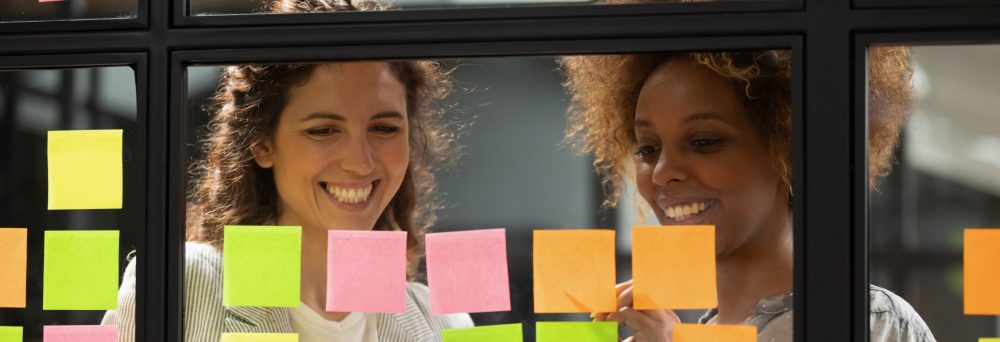Higher education institutions have a significant potential role in promoting lifelong learning. New research from the UNESCO Institute for Lifelong Learning and Shanghai Open University shows both the advances being made and the limitations and challenges that continue to prevent this potential being fully realized, writes Edith Hammer

Part-time study, online learning, micro-credentials, flexible pathways, community outreach – these are just a few ways to support lifelong learning in the higher education sector. While traditionally associated with formal education, universities and other higher education institutions (HEIs) have become paramount in promoting lifelong learning for diverse groups of learners. As traditional hubs of knowledge, they can embrace lifelong learning as a catalyst for transformation, supporting reskilling and upskilling, social equity and sustainable development. Within this context, two questions arise: What is the role of HEIs in promoting lifelong learning in society? And what does it take for HEIs to become lifelong learning institutions?
These two questions were the starting point for an international research project on ‘The contribution of higher education institutions to lifelong learning’, conducted by the UNESCO Institute for Lifelong Learning and Shanghai Open University (SOU), in the People’s Republic of China, from 2020 to 2022. The results of this research have now been published in two reports: International trends of lifelong learning in higher education, based on the results of an international survey among 399 HEIs, conducted jointly with the International Association of Universities, and Institutional practices of implementing lifelong learning in higher education, based on six case studies. Together, the survey and case studies offer a nuanced understanding of successful strategies, challenges, and areas for improvement in promoting lifelong learning within and through higher education.
When it comes to the national policy context, roughly two-thirds of the HEIs surveyed reported that their country has national legislation in place which defines lifelong learning as a mandate of HEIs, indicating strong commitments to widening lifelong learning opportunities in higher education. The case studies also revealed that a comprehensive national policy is often lacking, with continuing education and flexible learning pathways appearing as the most developed areas. This emphasis on continuing and professional education is also reflected at institutional level, in HEIs’ lifelong learning strategies, mission statements and governance mechanisms – with centres for continuing education playing a key role in implementing lifelong learning. Among those institutions that indicated that they had a dedicated unit for lifelong learning, almost three-quarters selected ‘offering and selling education programmes and trainings’ as one the main functions of this unit. When it comes to target groups for lifelong learning provision, the most prioritized group selected was ‘working people requiring upskilling/reskilling’ (89%), followed by ‘public and private organizations’ (84%) and women (82%).
In comparison, older people, unemployed learners, and people with disabilities are targeted to a lesser degree. The priority further decreases for persons living in remote or deprived areas, and ethnic and religious minorities. The least prioritized group are prisoners and former prisoners. These results suggest that the most vulnerable groups are generally less prioritized, while labour market-oriented learning, usually targeting comparatively advantaged groups of learners, has become an important part of institutions’ lifelong learning agenda.
While recognizing the need to diversify access to and participation in higher education, HEIs are also challenged in many countries by a decline in public funding for higher education. Many HEIs rely on tuition fees and on-demand services to provide lifelong learning activities. As the research indicates, lifelong learners are most likely to rely on personal resources to participate in lifelong learning, which is a barrier to participation for disadvantaged groups.
Against this backdrop, it is vital for HEIs to develop a whole-institution approach to lifelong learning that goes beyond offering continuing education for often already well-educated groups in society. An important step to achieve this is a strong commitment by HEI leadership and the drafting of an institutional lifelong learning strategy that considers different elements of HEIs’ lifelong learning mandate (flexible learning provision, recognition of prior learning, flexible pathways, community engagement), a range of learning purposes (professional development, personal growth, civic competences, sustainable development, social inclusion, strengthening local communities, etc.), different target groups, and a sustainable model for funding and quality assurance (e.g. developing cross-financing approaches and a monitoring-and-evaluation system to systematically track progress).
The six case studies in general reveal that while some areas – such as continuing education and flexible learning pathways – are in some cases very well developed, institutions often lack a comprehensive policy framework. This is essential in ensuring greater consistency of approach across institutions and in consolidating the involvement of government agencies and other stakeholders.
Such a comprehensive approach can be a strong lever to widen access and participation and diversify learning provision. HEIs are key for extending learning opportunities to local communities; they can make important contributions to promoting social equity and community resilience and strengthening local economies – critical in light of the climate crisis. In view of current and future socio-economic transformations, the inclusion of vulnerable groups needs to move up on the agenda of policy-makers and HEI leaders. Therefore, it is important to rethink and transform current educational models and to work towards a right to lifelong learning for all.
Edith Hammer is Programme Specialist, Skills Throughout Life, UIL
The resources associated with the project, including the two publications, International trends of lifelong learning in higher education and Institutional practices of implementing lifelong learning in higher education, are available here: https://www.uil.unesco.org/en/higher-education-lifelong-learning
In addition to the two research reports launched this month, UIL is preparing a third publication which features three thematic studies on universities’ practical approaches to lifelong learning, including chapters on universities addressing the needs of older learners, universities’ contribution to building learning cities, and universities’ social responsibility and community engagement (to be published in 2024).

Good morning and thanks a mill for Your generous sharing. I found extremely interesting and thought-provoking the webinar and the research. I am very interested in the next publication in 2024. I can’t wait. As an old teacher of Psychology, I try to promote LLL in my High School by creating projects and a stable hub in order to reskill and upskill adults (workers mostly but also disadvantaged and fragile people). At the same time, I tried to enrich and reinforce the sense of social belonging and safety by creating focussed projects and by providing sources and room for active listening and proper social/educational activities. Positive relationships and reciprocity, or two-way connections, are crucial to build a safe society (especially after pandemic), thus welcoming people in presence and accepting their vulnerability by a new strengths approach, by considering vulnerability as a natural part of “Positive Psychology” (not in contrast with it) is fundamental, in my opinion. Promoting a “wholistic” approach for adult empowerment, not only to upskill the workers, but by overcoming anonymity and invisibility, should be paramount. Unfortunately, policies are investing increasingly less in that field in terms of money, teachers and spaces. I hope that adult educational re-decisions through an “olistic-relational approach”, will be urgently recognised as part of human rights and an indispensable chance to help them to raise children in good health (both mental and physical), that is also a social responsability (as pandemic showed us vastly). Thanks for Your kind attention to my opinion, for Your generosity and Your precious work. Looking forward, I wish You a nice weekend.
My warm regards,
Sabrina
This is very enlightening, many universities can learn a lot from this great initiative by SOU and UNESCO. The time has come for Higher education to move away form traditional pathways and embrace newer strategies to increase access to all social groups.